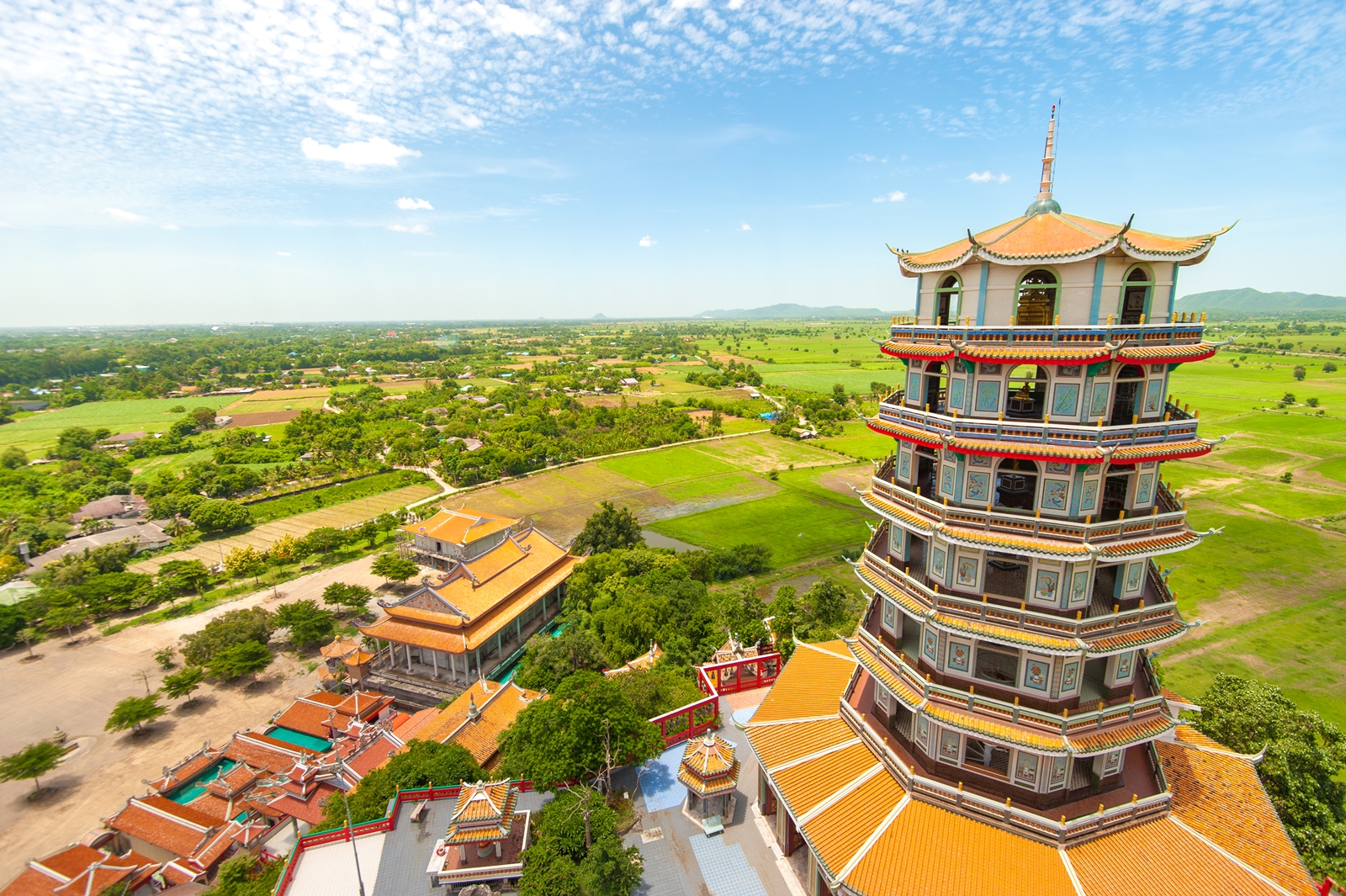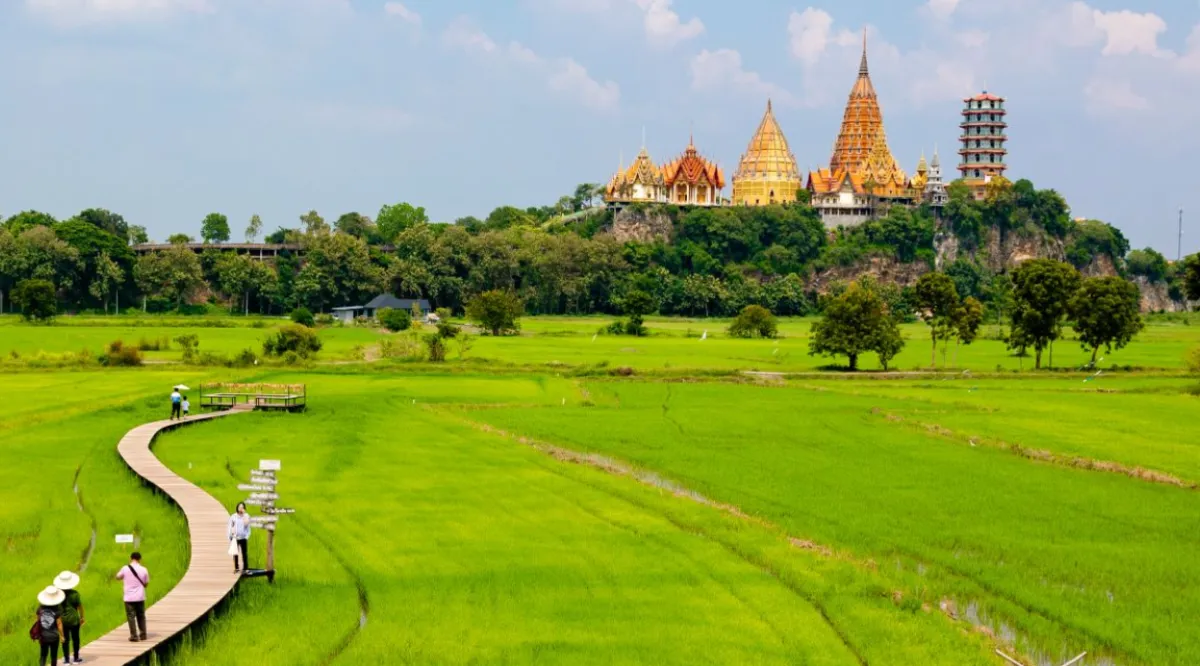
Kanchanaburi is another province with exceptional tourism features, such as natural tourism, history, and various temples that visitors should not miss because they can travel and make merit at the same time. To save everyone trouble, we have gathered the things you most need to know.
1. Tum Suea Temple, Tha Muang District: This ancient sanctuary is well-known for the 69-meter-tall octagonal pagoda Kesukeaw Maha Prasat and the 9-meter-tall Luang Por Chinn, who is responsible for bestowing blessings. Several relics of the Buddha are housed within a structure with nine levels. Here, you can also take in a stunning panorama of verdant rice paddies. There are 1,237 stairs leading up to the temple, or you can pay 10 baht to ride the elevator.
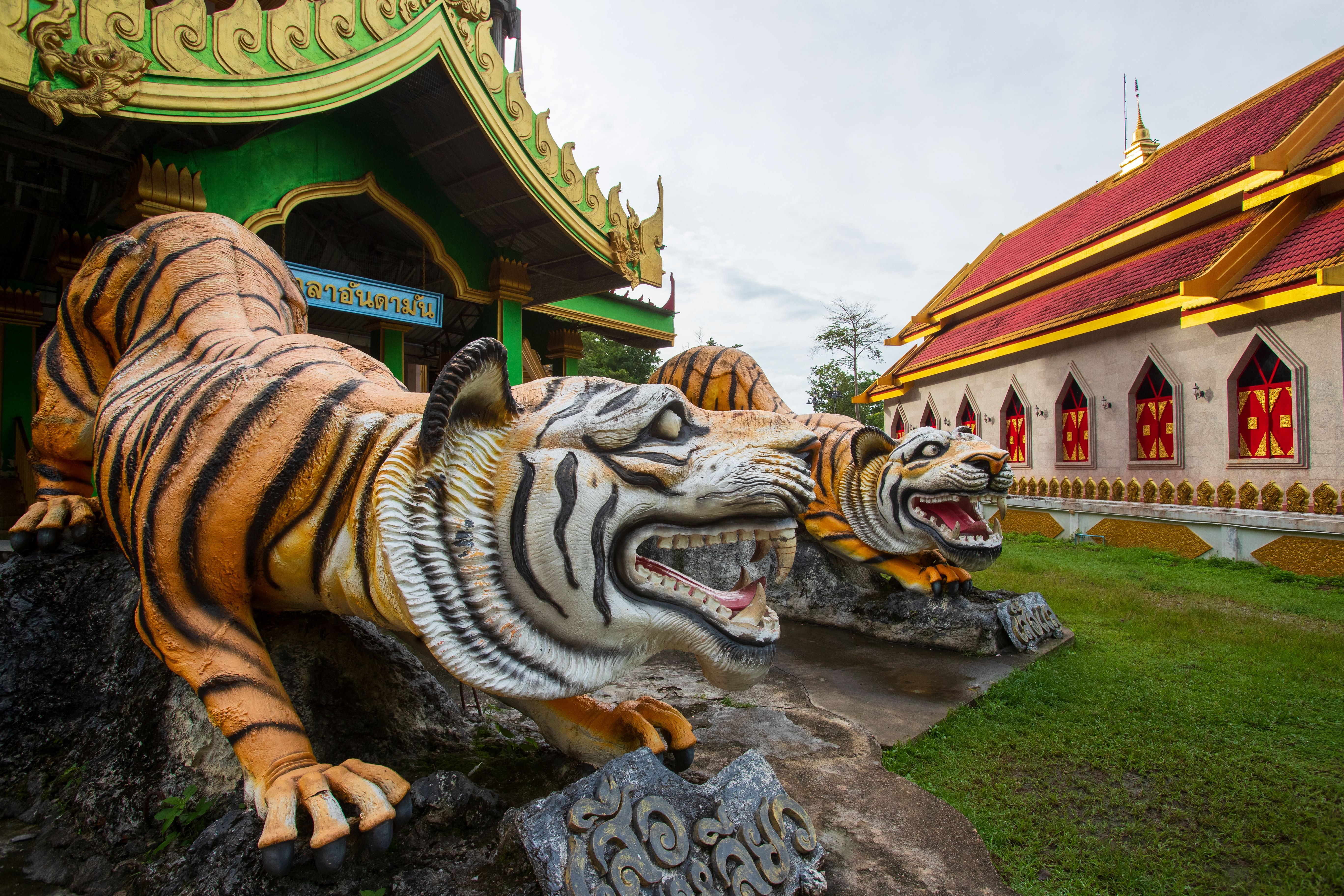
2. Buddhagaya Pagoda, Sangkhlaburi: Thais of Mon origin have ancient religious sites around here. This pagoda was constructed in 1978 by Luang Pho Uttama, who fashioned it as a replica of the Bodh Gaya Chedi, the site of Buddha's enlightenment in India. The Buddha’s relics were transported from Sri Lanka and are housed inside. Every year on Songkran Day, there will be a Mon Songkran celebration.
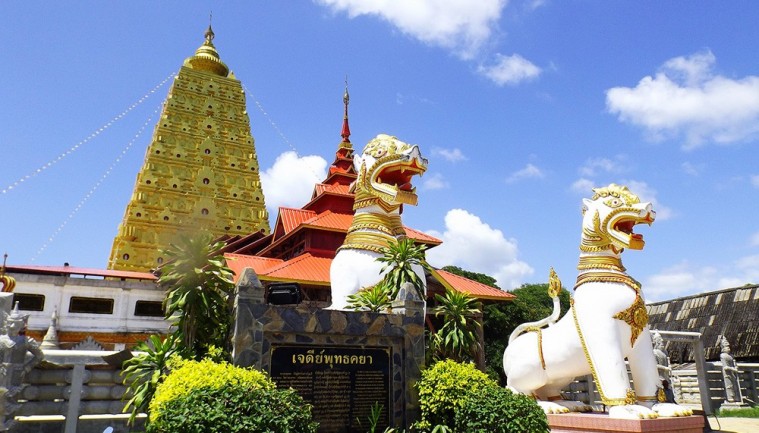
3. Wang Wiwekaram Temple or Luang Pho Uttama Temple, Sangkhlaburi District: This is a Mon-style temple constructed by Luang Pho Uttama in 1953. There are beautiful marble and mammoth ivory Buddha images, but the old temple became known as the Underwater Temple when it became an “unseen” tourist attraction after the building of the Vajiralongkorn Dam submerged it under water. Tourists who take a boat to explore the sunken temple can see it during low tide.
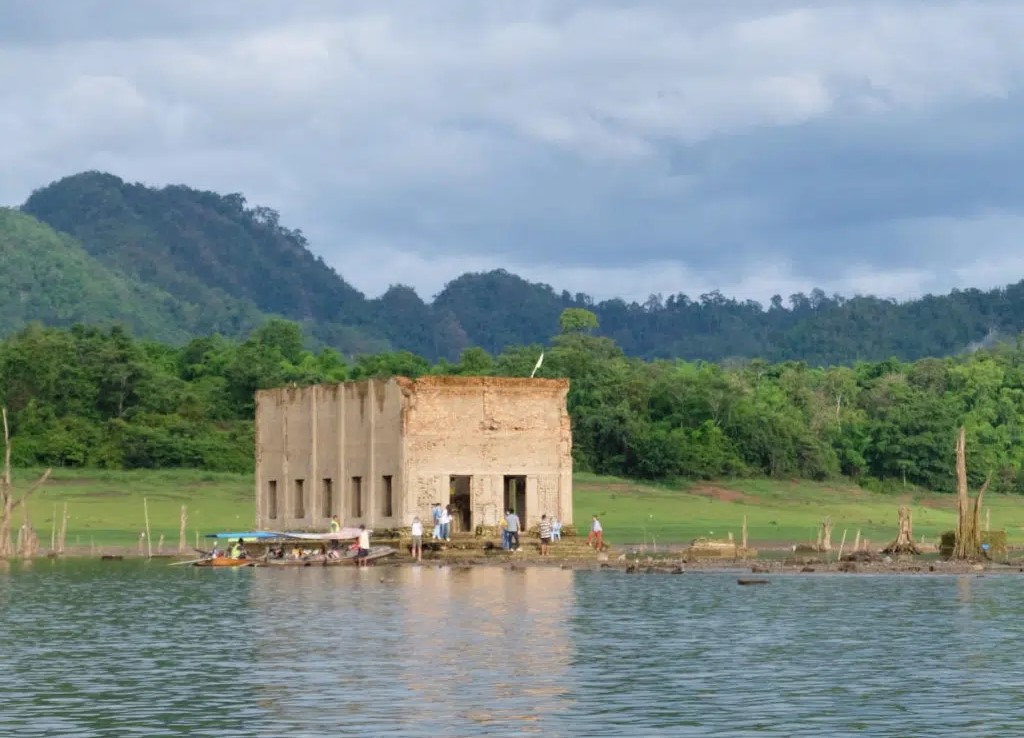
4. Wat Sa Long Ruea, Huai Krachao District: It is thought to have been constructed around 350-400 years ago during the Ayutthaya period. Around the ubosot, the ordination hall, there are statues of renowned monks from all over the nation, as well as a replica of the city of hell, including the world’s largest replica of the Suphannahong boat, built in the temple’s large pond, which houses a royal image. Tourists can pay their respects to the artifacts on the roof.
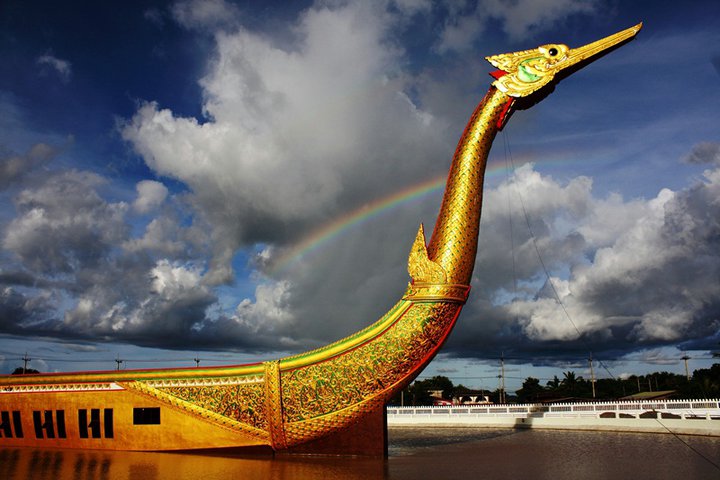
5. Wat Tham Pu Wa: Situated in Muang district, the temple is actually a big cave with stalactites and stalagmites. A large red-brown sandstone castle constructed in the ancient Khmer art style stands in front. There is also a shady and peaceful environment here, which is ideal for developing mindfulness and introspection, making it ideal for those interested in practicing Dharma.
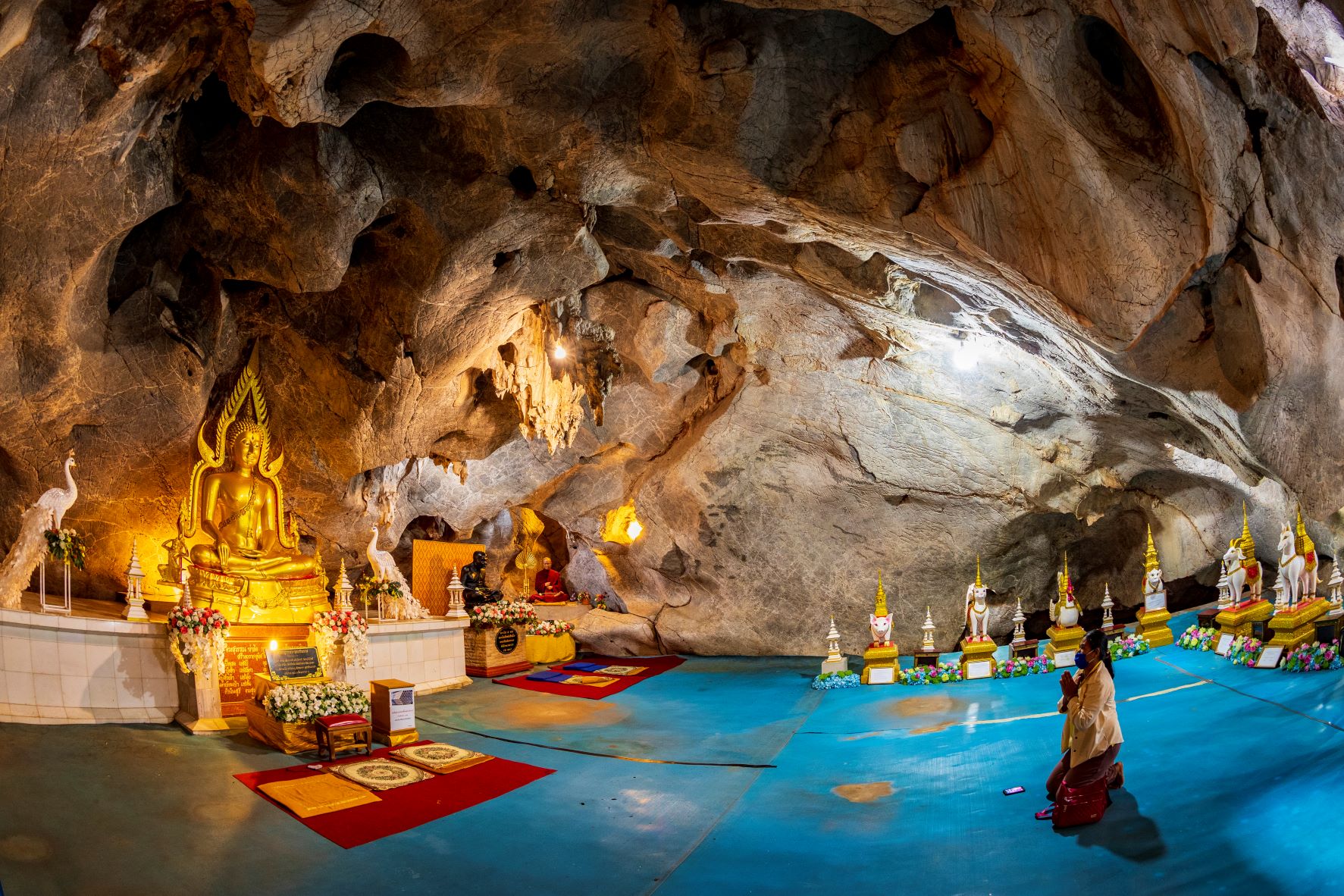
6. Wat Thawon Wararam or Wat Yuan: This temple is found in Amphoe Mueang, the central district. It was constructed during the reign of King Rama III and is the first Vietnamese temple in Kanchanaburi. There is a ubosot constructed in Chinese and Vietnamese styles, as well as a Chinese pagoda decorated with stucco images of swans and dragons, known as the Somdet Phra Nyanasangvara Palace. Tourists can offer their respects to the Buddha’s relics inside.
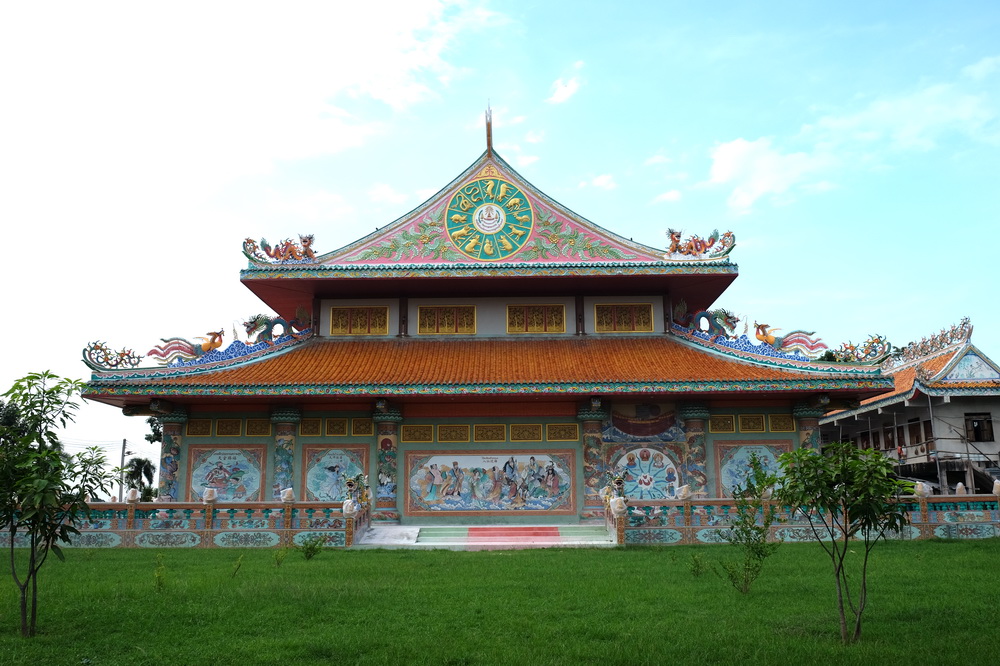
7. Stainless Steel Buddha Image, Wat Pa Lam Kha Khaeng: “Unseen” tourist attractions are situated in Si Sawat District on an island in the middle of the Srinakarin Dam reservoir. Taking a cruise is the only way to reach it. Beautiful fretwork patterns of Thai designs adorn the temple’s entrance arch and windows. Inside the temple, there is also a huge Buddha image in the “Giving blessing” posture, or “attitude,” that stands 12 meters tall and is the world’s largest stainless steel Buddha image.
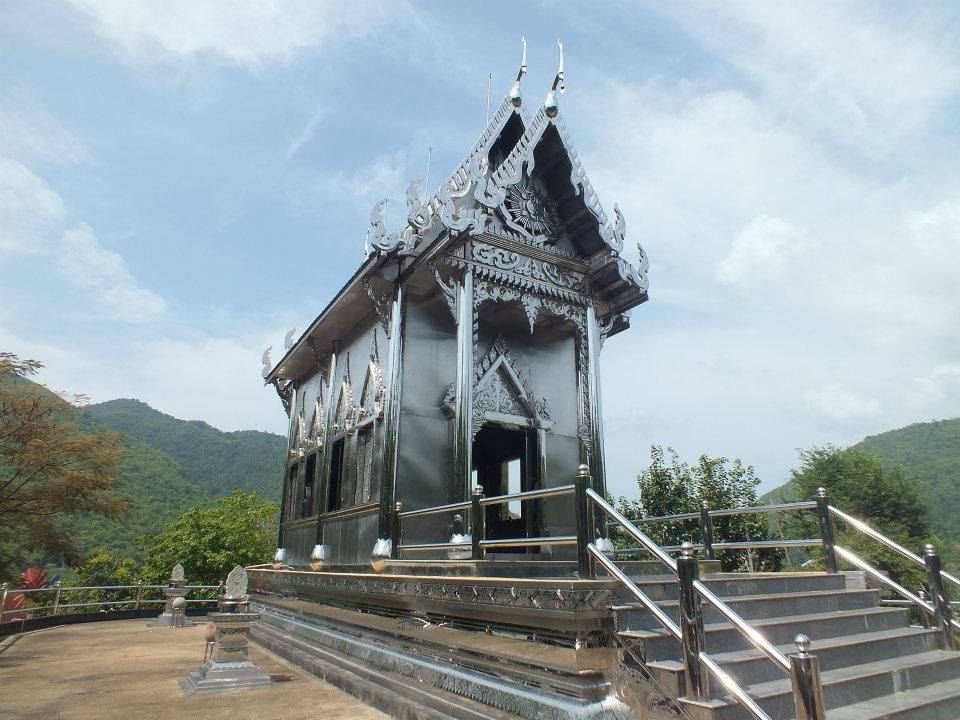
8. Wat Thipsukontharam, Huai Krachao District: The 32-meter-tall standing Buddha image known as Phra Phuttha Metta Pracha Thai Trailokkanat Kanthanarat Anusorn, draped in a saffron robe and praying for rain, is similar to the Bamiyan Buddha images that were victims of the 2001 bombing in Afghanistan. One of the most stunning Buddhist parks in all of Thailand was created from the repurposing of the various buildings that dotted the landscape.
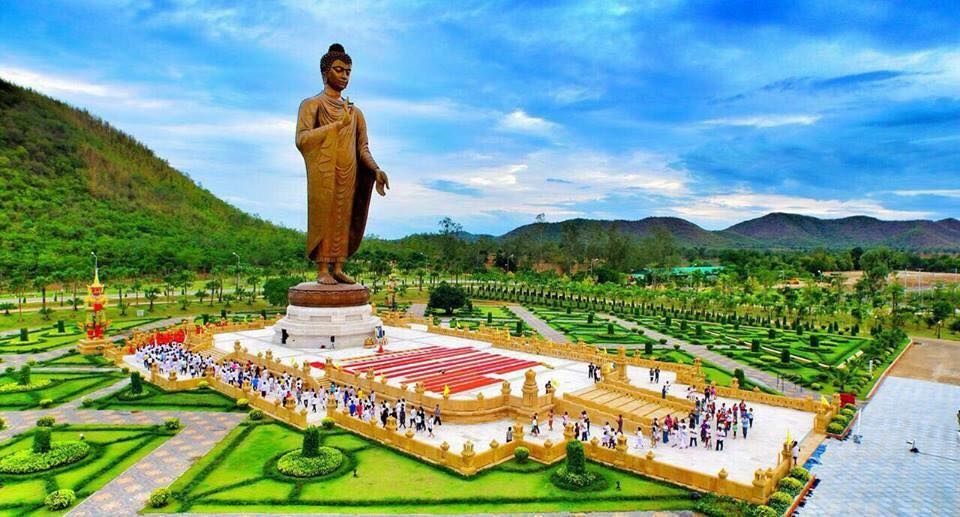
9. Wat Tham Khao Noi: The temple has been around for over 140 years and is located right next to Wat Tham Sua in Tha Muang District. A revered form of Chinese Buddhism known in Vietnam is Mahayana, which is reflected in the region’s beautiful and understated artistic tradition. The principal Buddha image, Phra Sri Ariya Maitreya or Phra Sangkachai, is housed on the lower floor, and relics of the Lord Buddha are housed in a Muen Phuttha Chedi, an octagonal Chinese roof, on the upper floor.
